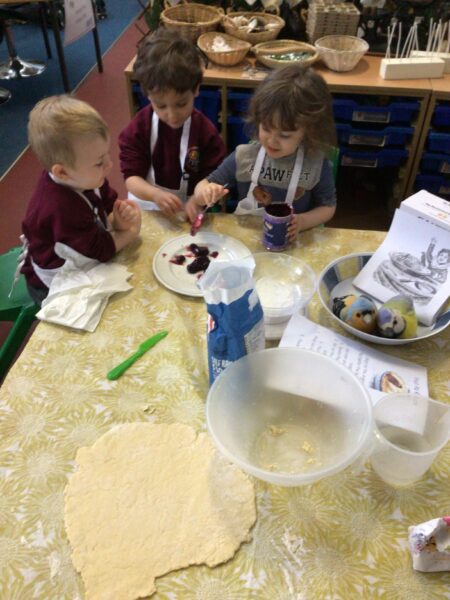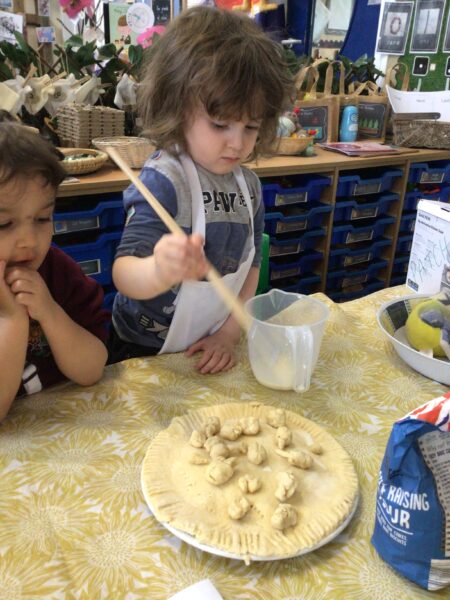We love nursery rhymes!
They help our learning in so many ways; vocabulary, concepts and our memory.
You will hear adults and children singing everywhere . . . playfully in the toilet, outdoors, in the home corner and during our daily nursery rhyme session.
They also provide inspiration for some adult directed tasks and enhancements linked to our current projects.
Here you’ll see us making a pie as we have been studying Sing A Song of Sixpence and Three Little Kittens. This supports our understanding of nursery rhymes even further as well as a whole host of other skills such as our fine motor control and team work. By making connections, existing learning is embedded and new learning happens!
We even decorated the pie with those cheeky blackbirds!


We’ve been exploring the concept of gardens within malleable play with the help of Mary, Mary Quite Contrary too!
